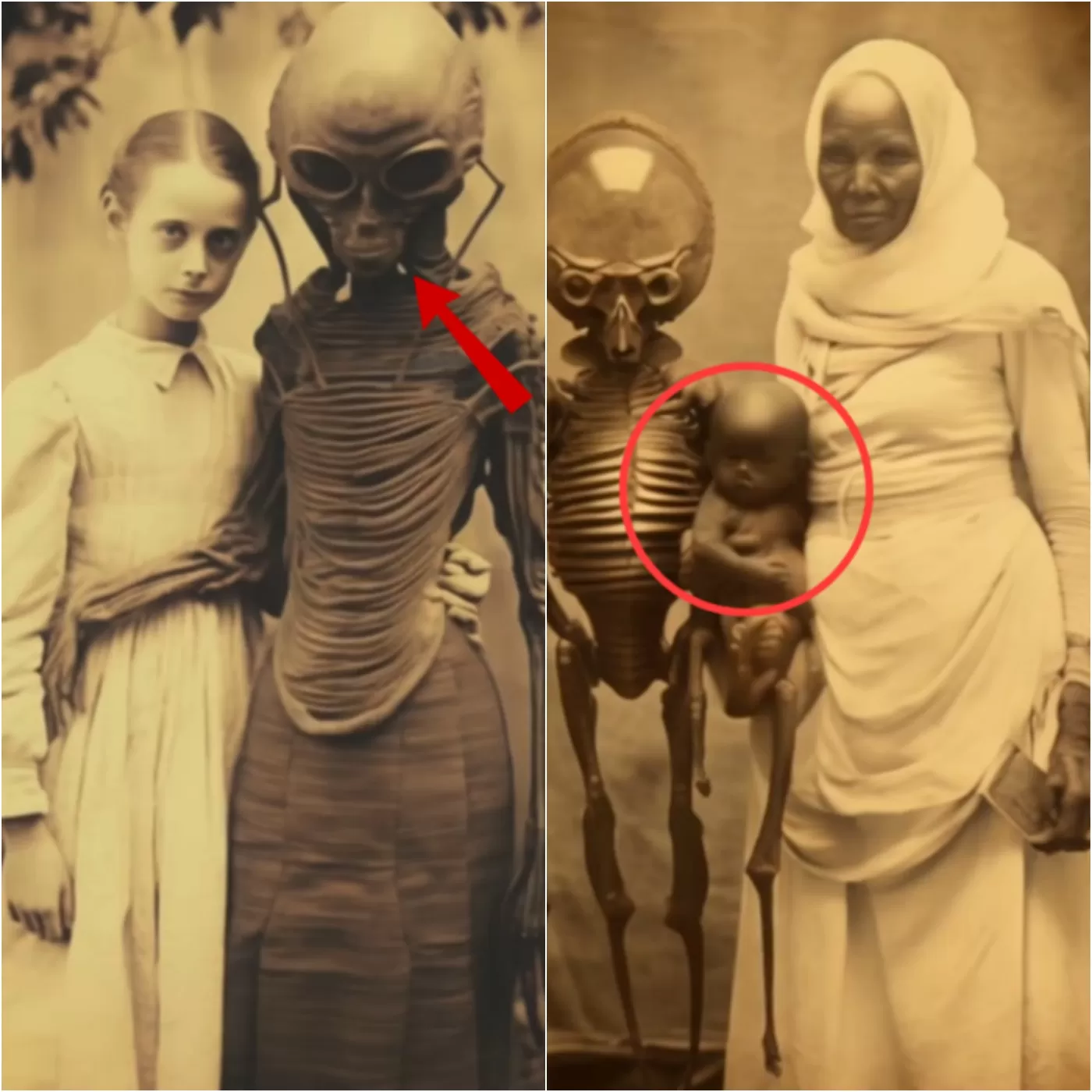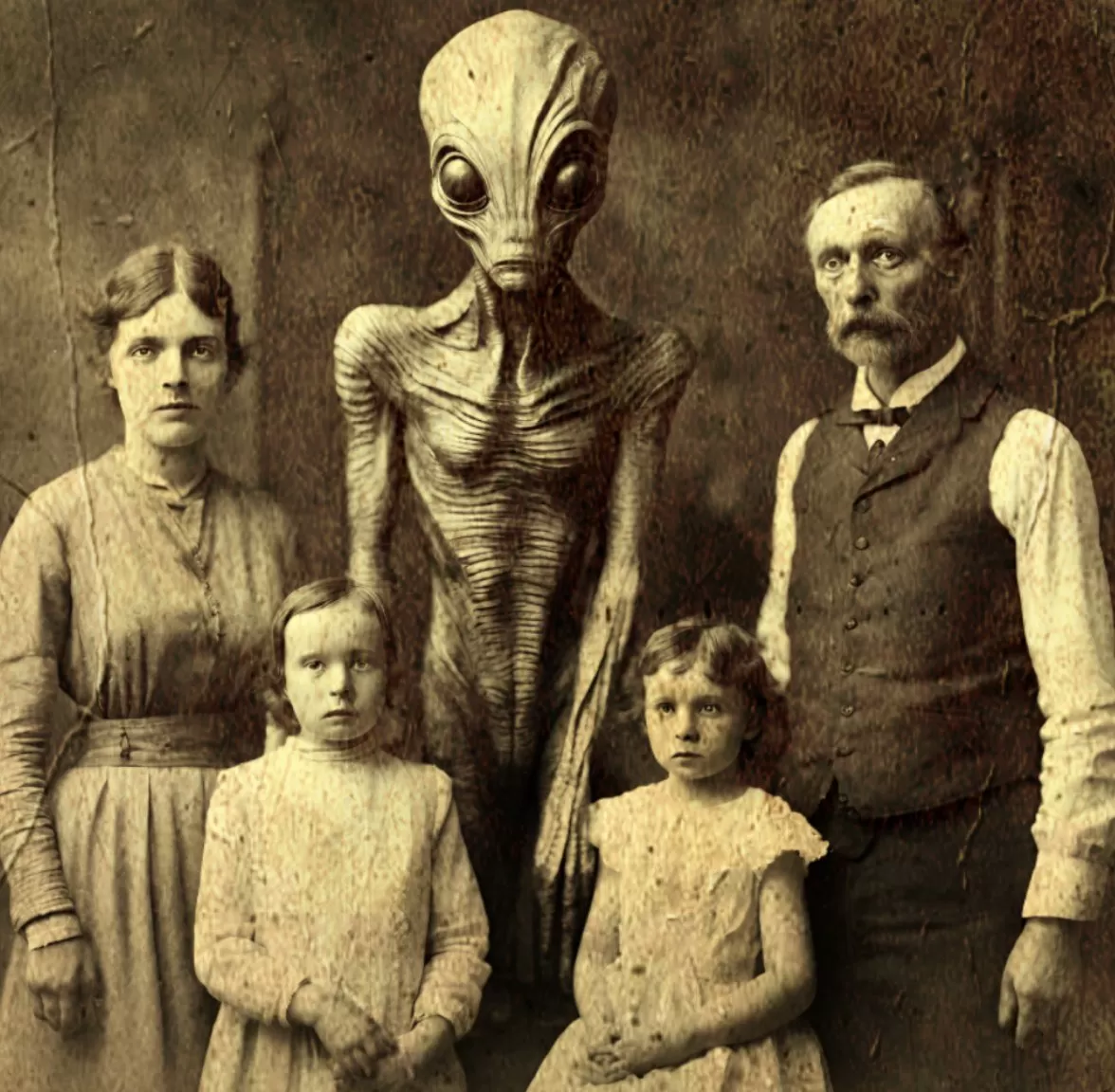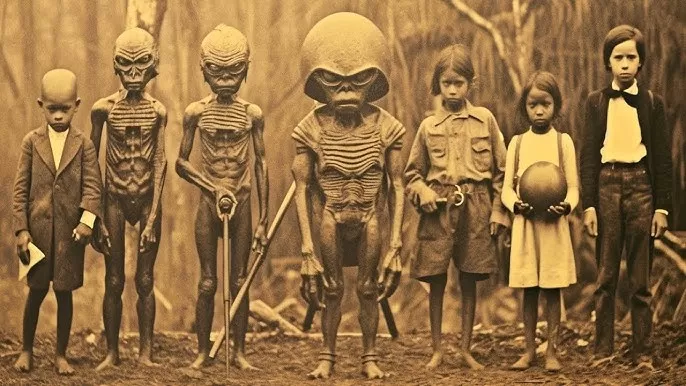A discovery that challenges history as we know it

In a find as fascinating as it is disturbing, archaeologists in a remote corner of Central Asia have uncovered what appear to be familiar images from over 1,000 years ago. What makes this discovery particularly intriguing is not just the images themselves, but the strange elements that suggest a possible connection to otherworldly beings.
The images were found on ceramic vessels decorated with an astonishing level of detail, depicting scenes from the daily life of an ancient civilization. However, what perplexed researchers were the humanoid figures with unusual features: elongated heads, large, almond-shaped eyes, and physical structures clearly different from human ones.
These figures do not appear as deities or mythical beings, but as members integrated into family activities: participating in banquets, helping with agricultural tasks and interacting with children. What could these representations mean?

In addition to the ceramics, archaeologists found technological remains that do not fit with the level of advancement expected for that time. Fragments of unusual metals, unknown tools and geometric patterns that look like microcircuits have been analyzed by scientists, who have so far been unable to identify their exact composition or purpose.
Professor Liang Zhu, head of the archaeological team, said: “We know that these communities were advanced for their time, but these discoveries are unprecedented. The figurines and objects found could change our understanding of human history and its possible interaction with intelligence beyond Earth.”
Ancient astronaut theorists have suggested for decades that past civilizations may have had contact with beings from other planets, and this discovery could be further evidence to support those theories. However, more skeptical historians argue that the figures could represent symbolism or imaginary beings from local mythology.

Cultural researcher Alexei Morozov explained: “It is important not to jump to conclusions. These images could be stylised interpretations of humans or local deities. However, I admit that the precision in the details is puzzling.”
What is most curious is that several of the depictions of these strange figures match contemporary accounts of close encounters. The shape of the “helmets” on their elongated heads and the “suits” that seem to cover their bodies have led many to wonder whether the ancients not only had contact with extraterrestrials, but also an ongoing relationship with them.
For now, the find raises more questions than it answers. As further studies are conducted on the objects and images, the world continues to speculate about what this discovery could mean for our understanding of human history.
Is this definitive proof that we are not alone? Or have we simply misinterpreted a creative facet of a forgotten civilization? Only time and science will tell.





